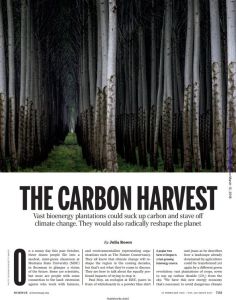Join getAbstract to access the summary!

Join getAbstract to access the summary!
Julia Rosen
The Carbon Harvest
Vast bioenergy plantations could suck up carbon and stave off climate change. They would also radically reshape the planet.
Science, 2018
What's inside?
Bioenergy with carbon capture and storage can reduce global warming, but how workable is its implementation?
Recommendation
To avoid a dangerous rise in global temperature, researchers believe it essential to remove carbon dioxide from the atmosphere. Bioenergy with carbon capture and storage (BECCS) is a promising technology that accomplishes this with the bonus of energy production. Science journalist Julia Rosen writes that despite the promise of BECCS, its large-scale implementation is not without ecological and economic challenges. She outlines concerns researchers have on the impact of BECCS to ecosystems and the world. The article will engage and inform anyone concerned about climate change.
Summary
About the Author
Julia Rosen is a freelance science journalist based in Portland, Oregon. She has written for Science, Nature and the Los Angeles Times.

















Comment on this summary